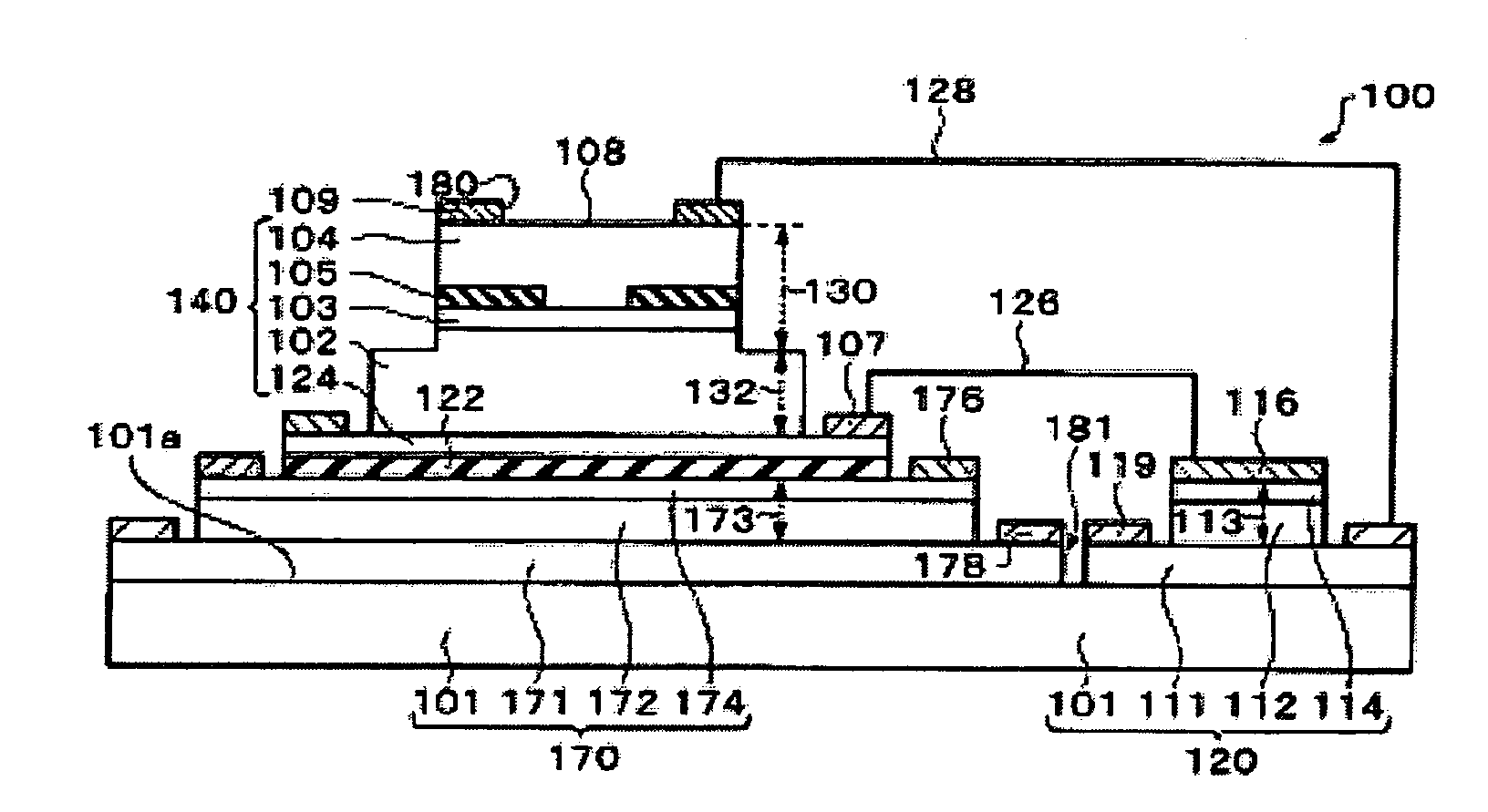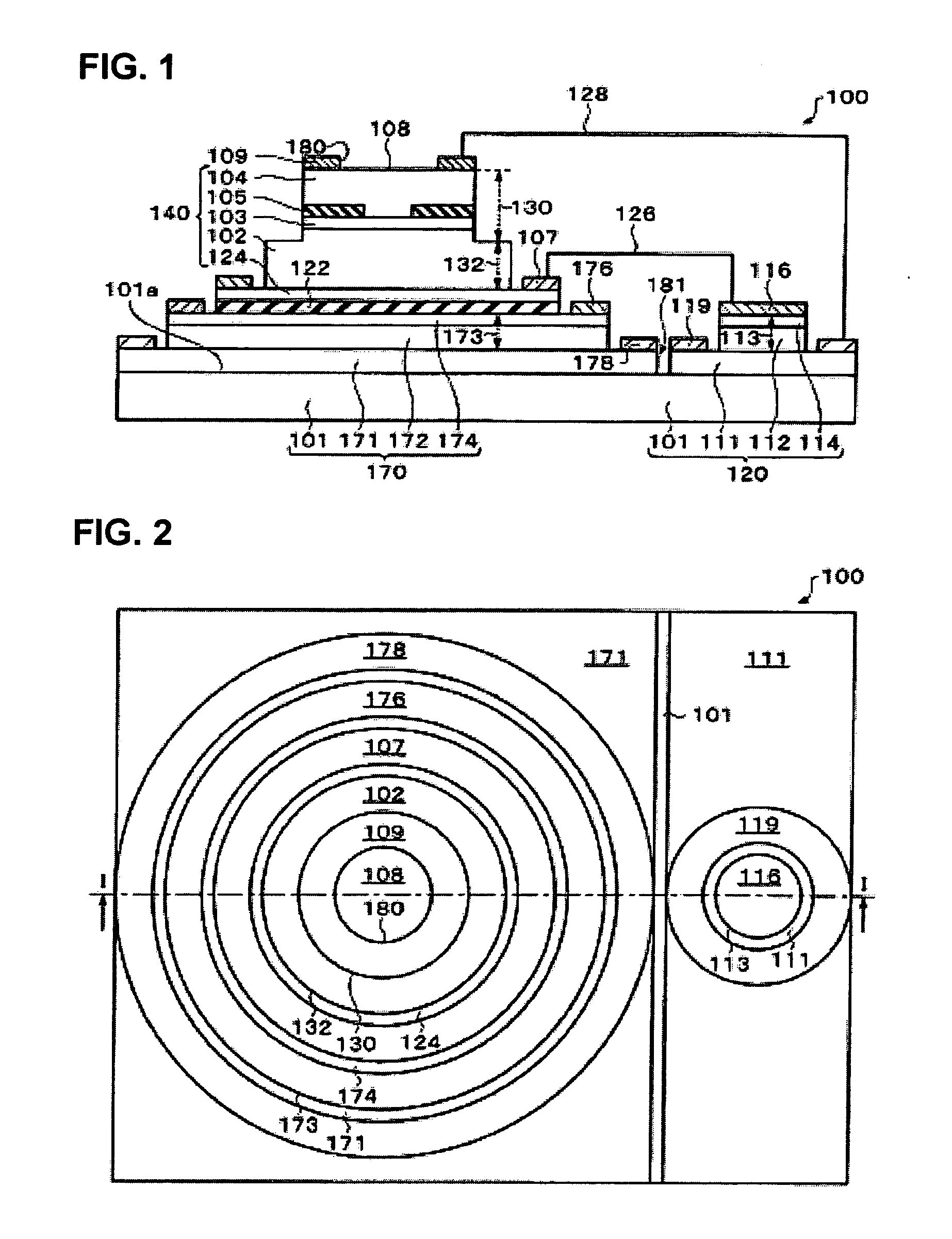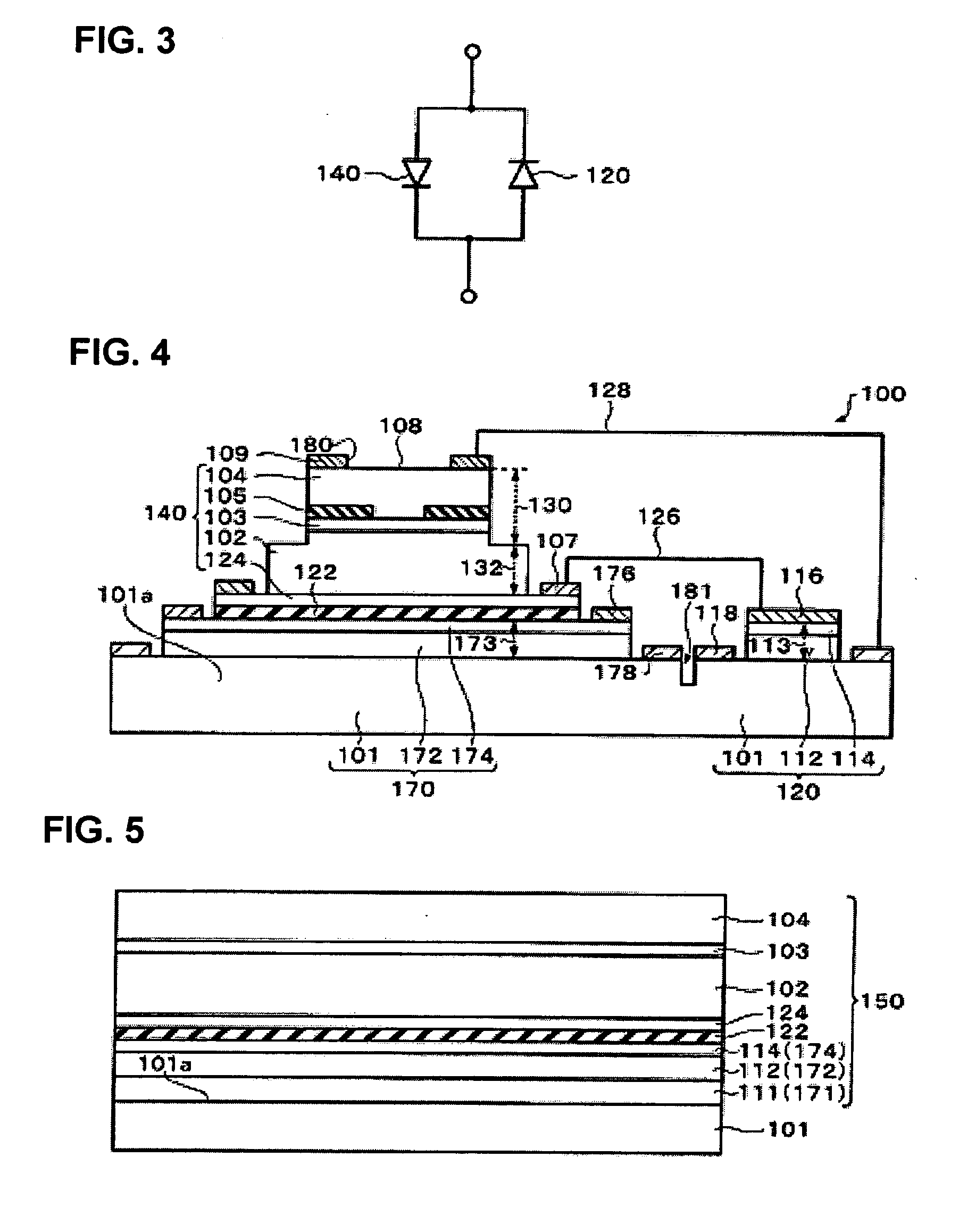Surface emitting type device, and method for manufacturing the same
a surface emitting and type technology, applied in the direction of photoelectric discharge tubes, semiconductor lasers, instruments, etc., can solve the problems of low tolerance to reverse bias voltage, device damage, device destruction, etc., to prevent electrostatic destruction and improve reliability.
- Summary
- Abstract
- Description
- Claims
- Application Information
AI Technical Summary
Benefits of technology
Problems solved by technology
Method used
Image
Examples
first embodiment
1. First Embodiment
[0037] 1-1. First, a surface-emitting type device 100 in accordance with a first embodiment is described.
[0038]FIG. 1 is a cross-sectional view taken along a line I-I of FIG. 2, and FIG. 2 is a plan view schematically showing the surface-emitting type device 100. FIG. 3 is a circuit diagram of a main portion of the surface-emitting type device 100.
[0039] The surface-emitting type device 100 includes, as shown in FIG. 1 and FIG. 2, a rectification section 120, an emission section 140 and a photodetector section 170. The present embodiment is described as to a case in which the rectification section 120 functions as a junction diode (including a Zener diode), the emission section 140 functions as a surface-emitting type semiconductor laser, and the photodetector section 170 functions as a photodiode.
[0040] The rectification section 120 includes a substrate 101, a fourth semiconductor layer 111 formed above the substrate 101, a capacitance adjusting layer 112 form...
second embodiment
2. Second Embodiment
[0074] 2-1. Next, a surface-emitting type device 200 in accordance with a second embodiment is described. It is noted that features different from the surface-emitting type device 100 described above and shown in FIG. 1 and FIG. 2 are mainly described, and descriptions of similar features are omitted.
[0075]FIG. 7 is a cross-sectional view taken along a line VIII-VIII of FIG. 8, and FIG. 8 is a plan view schematically showing the surface-emitting type device 200. It is noted that the same members as those of the surface-emitting type device 100 described above and shown in FIG. 1 and FIG. 2 are appended with the same reference numbers.
[0076] The surface-emitting type device 200 includes a rectification section 120, an emission section 140, a photodetector section (hereafter referred to as a “first photodetector section”) 170, and another photodetector section (hereafter referred to as a “second photodetector section”), as shown in FIG. 8 and FIG. 9. The present ...
PUM
 Login to View More
Login to View More Abstract
Description
Claims
Application Information
 Login to View More
Login to View More - R&D
- Intellectual Property
- Life Sciences
- Materials
- Tech Scout
- Unparalleled Data Quality
- Higher Quality Content
- 60% Fewer Hallucinations
Browse by: Latest US Patents, China's latest patents, Technical Efficacy Thesaurus, Application Domain, Technology Topic, Popular Technical Reports.
© 2025 PatSnap. All rights reserved.Legal|Privacy policy|Modern Slavery Act Transparency Statement|Sitemap|About US| Contact US: help@patsnap.com



